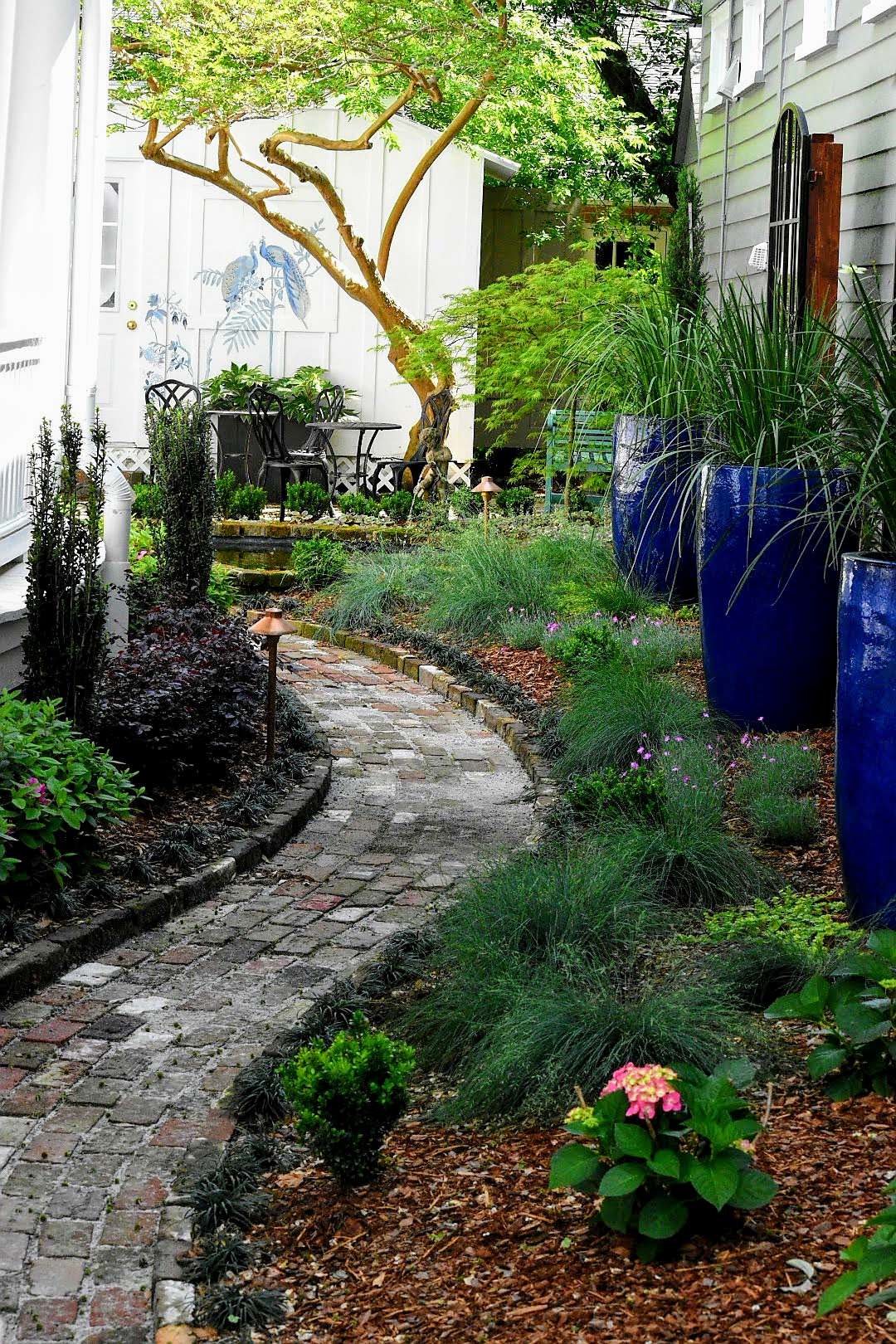Top Notch Landscape Design for Residential and Commercial Qualities
Top Notch Landscape Design for Residential and Commercial Qualities
Blog Article
The Role of Garden Style in Encouraging Sustainability and Biodiversity
Garden design is increasingly identified for its prospective to cultivate sustainability and enhance biodiversity within urban and country landscapes. By focusing on indigenous plant species and using water preservation methods, designers can develop atmospheres that not only grow yet likewise need marginal chemical treatment.
Importance of Indigenous Plants
Emphasizing making use of indigenous plants in garden style is critical for promoting eco-friendly equilibrium and sustainability. Indigenous plants are those that naturally happen in a particular area and have actually adapted to the local environment, dirt, and wild animals. Their incorporation right into yards sustains neighborhood environments by supplying environments and food sources for indigenous pollinators, birds, and various other wild animals.
Additionally, native plants are generally more resistant to local parasites and diseases, lowering the need for chemical pesticides and fertilizers. This resistance not just decreases environmental influence but additionally reduces maintenance prices for gardeners. In addition, indigenous plants usually call for less water than non-native varieties, lining up with lasting gardening techniques and minimizing the stress on local water resources.
Water Conservation Strategies
Integrating native plants not just enhances biodiversity however additionally plays a substantial duty in water conservation within yard designs. Indigenous varieties are adapted to regional environment problems, requiring less water than non-native equivalents. Landscape Designer. This characteristic reduces the requirement for irrigation, preserving both water resources and power
Additionally, executing rainfall yards can capture and filter stormwater runoff, promoting groundwater recharge while lessening disintegration. These yards use indigenous plants that grow in wet problems, efficiently handling excess water while producing diverse habitats.

One more efficient strategy is the usage of absorptive paving materials in pathways and patios, permitting rain to penetrate the ground instead of escaping. This promotes wetness retention and lowers the need for watering.
Last but not least, mounting a rainwater harvesting system can dramatically add to water preservation efforts. Gathering and keeping rain for garden use encourages lasting techniques and decreases dependence on municipal water resources (landscape designer near North Charleston South Carolina). By incorporating these methods, yard designs can successfully promote water preservation while sustaining ecological wellness
Minimizing Chemical Use
While several gardeners seek vibrant and healthy plants, reducing chemical use is vital for cultivating a lasting ecological community. The dependence on artificial plant foods and chemicals can cause dirt destruction, water contamination, and a decline in valuable insect populaces. By taking on natural horticulture practices, gardeners can improve the wellness of their landscapes while promoting biodiversity.
One effective method is to use compost and organic amendments, which enhance the dirt normally and boost its structure. garden design near Goose Creek SC. These techniques not only boost plant wellness yet also decrease the demand for chemical plant foods - Landscape Designer. Applying integrated bug administration (IPM) techniques further decreases chemical inputs by motivating natural predators, such as ladybugs and parasitical wasps, to regulate pest populations
Additionally, picking indigenous plant varieties can substantially reduce the requirement for chemical treatments, as these plants are better adjusted to regional conditions and are more resilient versus parasites and illness. By prioritizing lasting methods, garden enthusiasts can produce growing atmospheres that support both plant health and wellness and ecological community honesty, inevitably leading to gardens that are not just lovely however additionally ecologically accountable. Minimizing chemical usage is an essential action in cultivating yards you could try here that honor and boost the environment.
Producing Wildlife Environments
Developing vibrant wild animals habitats within yards not only improves biodiversity however also matches sustainable gardening practices focused on lowering chemical usage. By including native plants, garden enthusiasts can give essential sources such as food and shelter for different varieties, consisting of birds, insects, and tiny creatures. Indigenous plants are well-adapted to neighborhood problems, needing much less water and less chemical inputs, hence lining up with sustainability objectives.

Preserving a naturalistic method, which may include leaving some locations wild or undisturbed, enables for the all-natural procedures of environments to grow. This method urges the presence of useful pests and pollinators, which play a critical duty in the wellness of both gardens and bordering settings. On the whole, developing wildlife habitats is a fundamental element of sustainable garden layout, cultivating environmental balance and durability while enhancing the charm and performance of exterior areas.
Area Involvement in Horticulture
Community interaction in gardening cultivates a sense of belonging and collective obligation, changing specific horticulture efforts right into common campaigns that profit the entire area. By entailing neighborhood members in gardening projects, we can cultivate not just plants however also partnerships and social networks. Neighborhood gardens serve as important areas for education, where people of all ages can find out concerning lasting methods, biodiversity, and ecological stewardship.
Collective gardening initiatives, such as community gardens, promote the exchange of understanding and sources, ensuring that all individuals can add and profit. This inclusivity improves area strength, as participants interact to get rid of challenges such as food instability and environmental degradation. Furthermore, area gardens can act as systems for social expression, permitting individuals to share their heritage via varied planting and gardening techniques.
Furthermore, involving the area in horticulture campaigns can cause raised recognition of regional communities and the significance of biodiversity. By working jointly to design and keep these spaces, homeowners promote a common dedication to sustainability, producing a long lasting influence on both the environment and area communication. Eventually, neighborhood engagement in horticulture is an effective tool for promoting ecological stewardship and improving the high quality of life within communities.
Verdict
By highlighting the usage of native plants, executing water preservation methods, and decreasing chemical inputs, gardens can effectively sustain regional ecosystems. Collectively, these techniques not just enrich the elegance of areas however additionally advertise environmental equilibrium, making yard design a vital element in the quest of a sustainable future.
Report this page